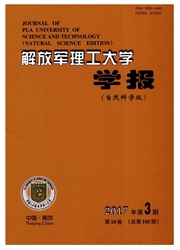

 中文摘要:
中文摘要:
针对滚动轴承故障诊断问题,在分析传统的误差反向传播(BP)算法、莱文伯格马夸特(LM)算法等经典人工神经网络训练方法的基础上,提出了差分进化训练算法。在选取差分进化策略时,取消了变异个体选取限制,从而加快了算法收敛速度。采用不同故障部位和程度的滚动轴承故障实验数据构成样本集合,并分别运用最速下降法、LM算法和差分进化算法对相同结构的人工神经网络进行训练,对比分析其故障分类性能。实验结果表明,差分进化算法能较好地识别滚动轴承故障,准确度较高,总体上与LM算法相当,且其在多次实验中故障识别率的最大值与最小值差别较小,具有较好的稳定性,同时该算法避免了LM算法存在的"过学习"问题。
 英文摘要:
英文摘要:
Based on the classical training algorithms of artificial neural networks such as traditional backpropagation algorithm(BP)and Levenberg-Marquardt(LM)algorithm,the differential evolution(DE)training algorithm was proposed for rolling bearing fault diagnosis.By cancelling the selection limits of variation individual when choosing the strategies of DE,the convergence speed of the algorithm was improved.Using six collections of rolling bearing fault samples at different positions and different levels,artificial neural networks with the same structure were trained by steepest decent algorithm,LM algorithm and DE algorithm,respectively.Fault classification properties were analyzed comparably.The results show that the DE algorithm can identify the faults of rolling bearings well,and it is nearly the same to LM algorithm.The difference between the maximum and the minimum in fault identification is small and shows good stability.The method avoids the problem of "over-fitting" that exists in LM algorithm.
 同期刊论文项目
同期刊论文项目
 同项目期刊论文
同项目期刊论文
 期刊信息
期刊信息
